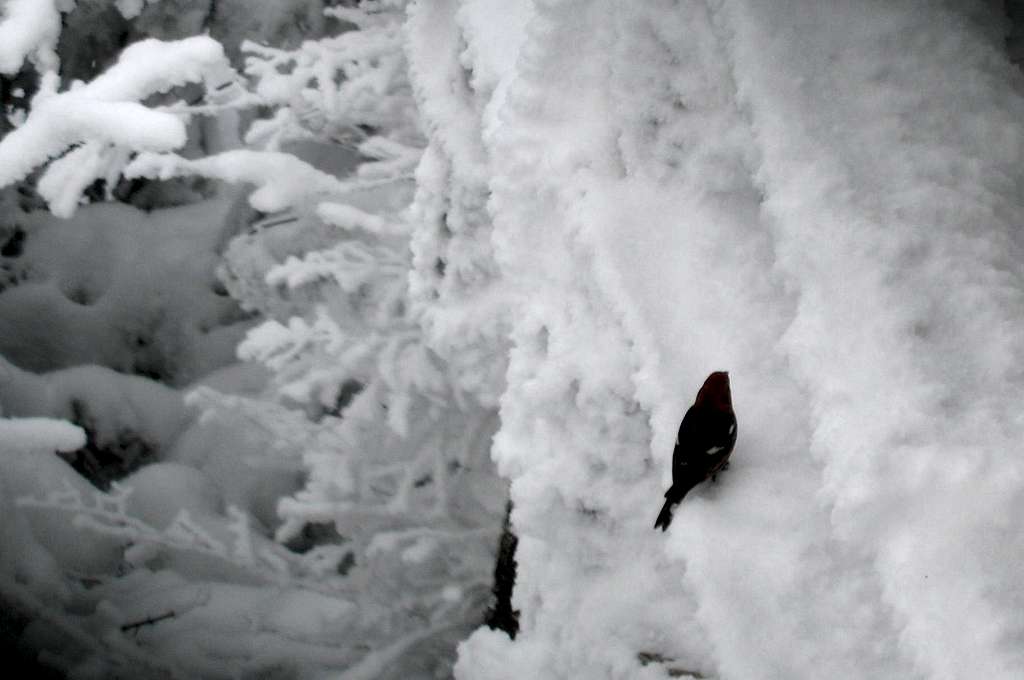
(Loxia leucoptera)
It's not a great shot, but you can see how the white-winged crossbill gets the first half of its name. As for the second half, the two parts of the beak do in fact curve past each other. This is supposed to be useful somehow for extracting seeds from spruce and hemlock cones.
This is the male half of what I took to be a mated pair. They were calling each other with a distinctive twittering noise.
Crossbills are easy to spot in the Whites in early spring, when few other birds are active in the snow - covered evergreen forests. Some are present year-round, others migrate as far as the Carolinas in cold winters. They often form flocks and will move together to find the best stands and trees for foraging. Sources disagreed somewhat on the breeding season, the one I believe says that breeding occurs primarily in concert with the best feeding opportunities: July for larch and white spruce, winter (Jan/Feb) for white, red, and Englemann spruces and early spring (March/April) for black spruce. (Hemlock is not mentioned despite being cited by other sources as a major food source for crossbills in New England.)
Descriptions of the call are also rather varied; one source mentioned that different populations are known to have different calls.
Summit of Cannon Mountain, April 7 2007.
